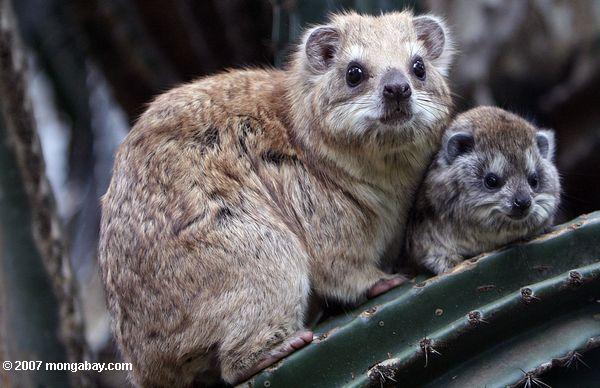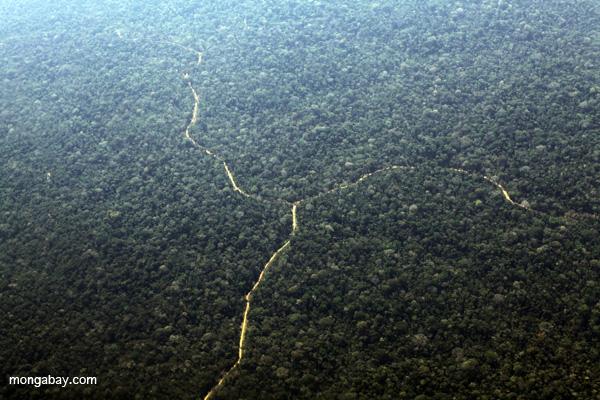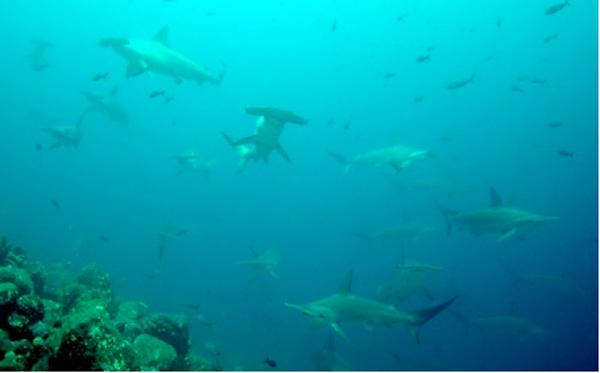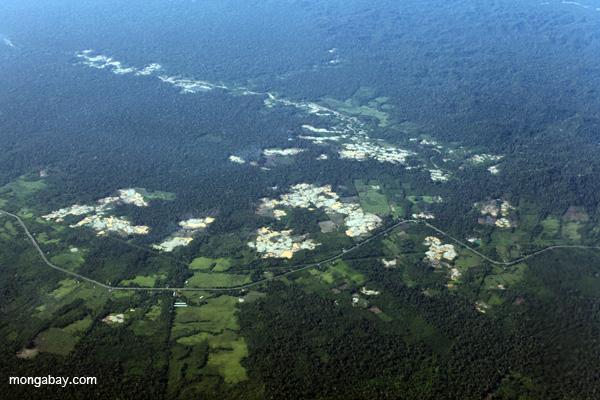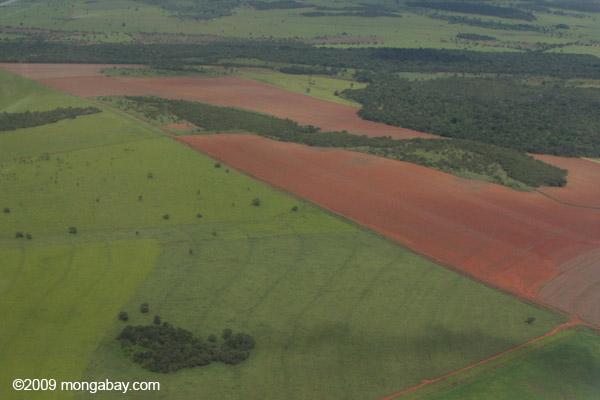Only 5 percent of Kenya has major tree cover today, so it might be surprising to learn that it has some of the oldest national parks in the history of the conservation movement. In 1900, after the first landmark international conference of African wildlife in London, the Southern and Northern Game Reserves were formally created by a colonial government.
Over the last century, 91.7 percent of all changes to protected areas in Kenya have involved reductions in their area, known as downsizing, which is an unusual and remarkable statistic from a global perspective. Analyses show, however, that a variety of factors—including some that which occurred half a century ago—could be responsible for the status of forests in Kenya today.
Although many aspects of colonial governance have been criticized for their exclusion or degradation of the rights of local people, when it came to national parks, a different dialogue emerged very early in the conversation.
Neither the Samburu nor the Maasai tribes of Kenya had a tradition of hunting (except for the killing of lions as a rite of passage or moran), and were primarily pastoralists. Thus, the first national parks were created in areas with human occupation, and the humans themselves were initially not perceived to be threats to wildlife. Unfortunately, the same could not be said of the effects the wildlife had on the animals belonging to the pastoralists. Lions harassed the Maasai, repeatedly killing cows and creating devastating economic turmoil. By 1922, honorary game wardens had to be employed, whose job it was to protect people from wildlife.
“These officers travelled throughout the country responding to complaints about wild animals,” writes Matheka in his comprehensive overview of Kenya’s first national parks. “They poisoned, trapped, or shot offending animals in both African and European areas. They also organized game drives aimed at confining wild animals to designated areas.”
Colonial Conservation
Matheka reports on a series of events that soon followed, that will no doubt sound strange to our ears today. In 1938, for instance, a hunter named John Bonham was hired “to kill some 8,000 zebra and 5,000 wildebeest in Narok Distict to provide extra grazing land and to reduce the incidence of malignant catarrh.” World War II then brought hordes of underfed soldiers to Kenya, who eventually began to subsist, to a large extent, on Kenya’s wildlife.
These events, together with the “vermin” policy of the Game Department (the sanctioned extermination of animals such as lions, otters, and even baboons) produced far-ranging loss of wildlife in the first half of the 20th century.
An assessment of one hundred years of mammal diversity and richness in Kenya, published earlier this year in PLOS One by Tóth and colleagues, revealed that 52 species had completely disappeared from the six sites analyzed in the study.
The largest changes in species richness were in the forested Kakamega National Park, and not within the other savannah-dominant parks. The authors posit that Kakamega historically likely supported solely forest-dwelling species, but due to repeated and continual deforestation, has a more open habitat today – this in turn has resulted in a significantly altered species composition.
Conservation and Forest Cover in Kenya
Global Forest Watch, an international forest degradation monitoring system run by the World Resources Institute, calculates that 75 percent of Kenya’s forests are regenerated, and only 19 percent is primary forest (with an additional 6 percent planted). According to its data, Kenya lost more than 290,000 hectares of tree cover from 2001 through 2012, but simultaneously experienced more than 100,000 hectares of forest growth, resulting in an overall loss of approximately 190,000 hectares--or 6.3 percent of the country’s remaining forest cover.
The World Wildlife Federation’s PADDDtracker records instances of change to protected areas (PAs) via downsizing (a decrease in PA area via a legal boundary change), downgrading (the legal increase in the number or scope of human activities within a PA), and degazettement (when legal protection is lost for a PA in its entirety). Kenya’s 145 PADDD events are overwhelmingly due to downsizing (133 events), all of which are already enacted by law. These events affected a total of 13,300 square kilometers, with at least 20 events per decade from 1960 to 2000. Most of the events have as-yet unverified causes that could be related to land claims or industry, among others.
A PLOS One study in 2009 of wildlife census numbers within and outside national parks in Kenya revealed some startling statistics on the functionality of Kenyan parks today. Assessing 270 wildlife counts spread over 25 years, the study analyzed an estimated 95 percent of the wildlife in 73 percent of the area covered by national parks.
Three of the seven parks (Tsavo East and West, and Meru National Parks) in the study demonstrated significant declines in wildlife population densities, while two others showed slightly less intense declines. These five parks are some of Kenya’s most populous wildlife reserves, accounting for 98 percent of all of its wildlife. Kenya’s largest parks showed the steepest declines - in Meru National Park, between 1977 and 2000 (23 years), wildlife numbers plummeted 78 percent.
The Last Decade in Kenya
Yale University’s annual Environmental Performance Index uses an algorithm to calculate scores for 178 countries over the last ten years across nine issue categories, including assessments of biodiversity, forests, and habitat among others. Kenya ranks 72 out of 178 countries in the Biodiversity and Habitat categories, several steps ahead of the United States. This is no mean feat, but it remains consistently behind its neighbor, Tanzania, who at rank 53 has scores that are 12 points higher, and nearing 100 in the individual category of terrestrial protected areas.
This analysis indicates that Kenya has remained ahead of its peer group of other sub-Saharan nations over the last decade, both in terms of the status of its protected areas and, most remarkably, in the Percent of Forest Change category. Change in forest cover is measured by calculating the percent change in forested areas between 2000 and 2012 in areas with greater than 50 percent tree cover, including both gains and losses in forested land. Here, Kenya not only ranks very low, indicating little change, but in comparison to its peer group it has lost very little forest in the last decade.
This could be explained by its natural ecology of savannah-based PAs, as well as a strong history of PA downsizing, resulting in what might be very little forest left to lose. For now, Kenya appears to be holding stable in terms of deforestation, but the future will still be challenging for the remarkable wildlife its shrunken PAs still support.
Citations:
- Hsu, A., J. Emerson, M. Levy, A. de Sherbinin, L. Johnson, O. Malik, J. Schwartz, and M. Jaiteh. (2014). The 2014 Environmental Performance Index. New Haven, CT: Yale Center for Environmental Law and Policy. Available: http://www.epi.yale.edu.
- Matheka, Reuben. “Antecedents to the community wildlife conservation programme in Kenya, 1946-1964.” Environment and History (2005): 239-267.
- Tóth AB, Lyons SK, Behrensmeyer AK (2014) A Century of Change in Kenya’s Mammal Communities: Increased Richness and Decreased Uniqueness in Six Protected Areas. PLoS ONE 9(4): e93092. doi:10.1371/journal.pone.0093092
- Western D, Russell S, Cuthill I (2009) The Status of Wildlife in Protected Areas Compared to Non-Protected Areas of Kenya. PLoS ONE 4(7): e6140. doi:10.1371/journal.pone.0006140
This article was originally written and published by Mrinalini Erkenswick Watsa, a correspondent for news.mongabay.com.
